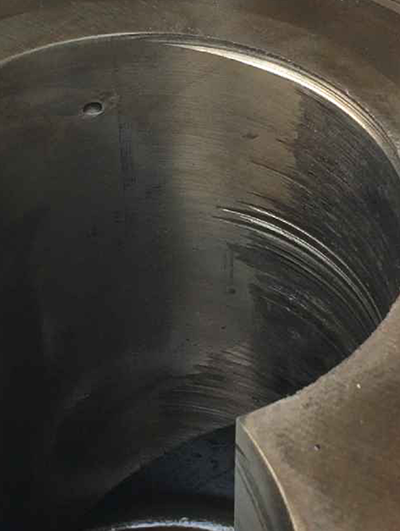
By Ron Marshall
During a recent compressed air assessment, the measuring instruments connected to a 50-hp lubricated screw compressor showed lower than rated amps. The customer had been complaining about low pressure in the plant, yet the plant flow meter indicated the compressed air demand was well within the rated capacity of the compressor.
Typically, when the compressor has lower than normal full load amps, the diagnosis is low compressed air output. Most often, the reduced flow is caused by a partially closed inlet valve — frequently a characteristic of a very inefficient compressor control mode called “modulation” — but in this case, this potential issue was ruled out.
An investigation ensued and found that the compressor had internal damage. This was causing excessive blowback within the screw elements. In short, the elements were completely worn.
When the unit was pulled apart deep scratches could be seen in the screw casing, Figure 1, and the sealing strips on the tip of each screw element had worn away to nothing, Figure 2. This compressor had come to the end of its useful life and needed to be overhauled or replaced. If your compressor is pulling low amps, you may need to take a look inside.

This case had a happy ending; a new variable speed drive compressor was installed, which solved the plant pressure problem and saved 35% energy due to more efficient operation.
The power utility paid for half of the air compressor, making the replacement less expensive than the overhaul. Significant advances have been added to modern day compressors in recent years — newer units are often much more efficient and have excellent energy savings features.

Leave a Reply